7th May
Bob Kortright leads first guided nature walk of the season
On Saturday 27th April, we started this year’s nature walk program with another guided nature walk led by naturalist Bob Kortright. While introducing Bob, I mentioned that this was the 4th year that he had led us. Bob’s guided walks always make me realize the great variety of plants, shrubs and trees we have in the park. Here he is in the centre addressing part of the group at the start:
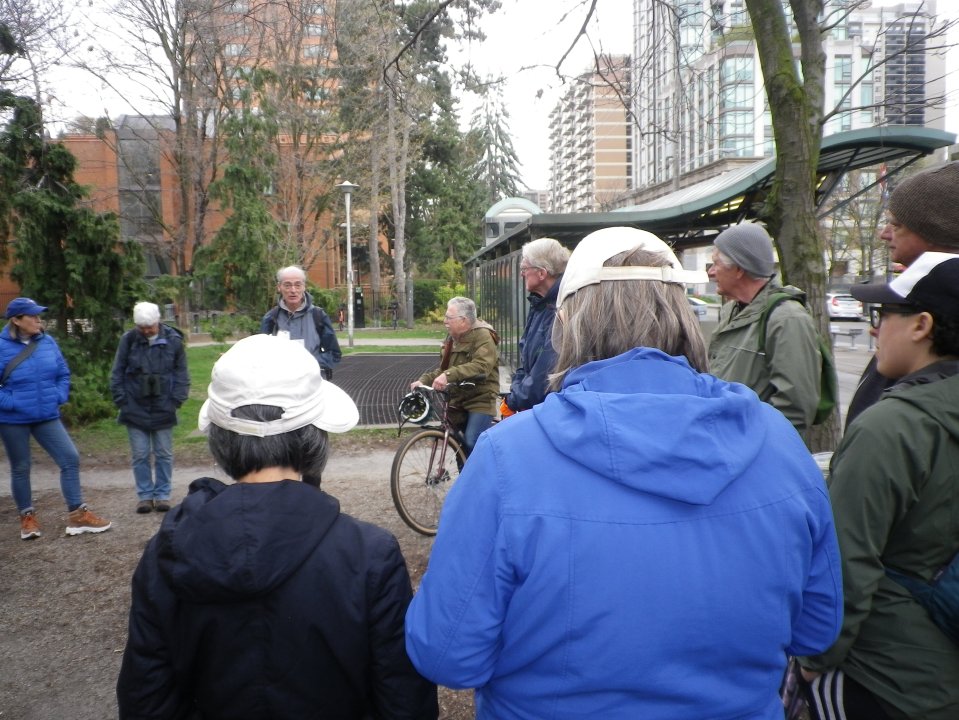
And here I am, introducing Bob (photo Barbara Chernin):
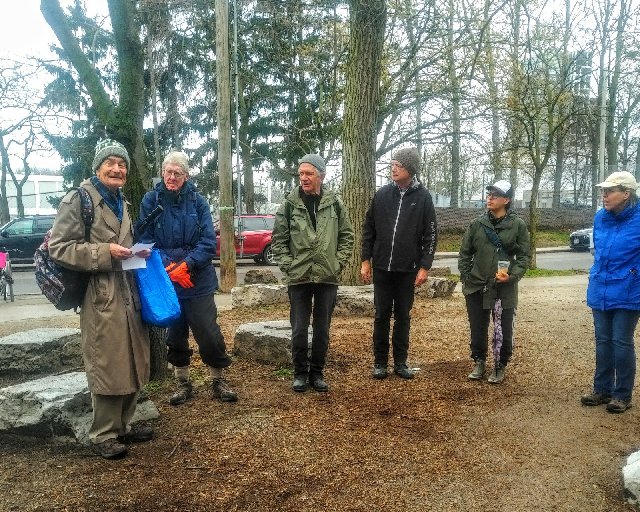
I counted 23 people in total, after some stragglers had joined us down the path. This is another part of the group:
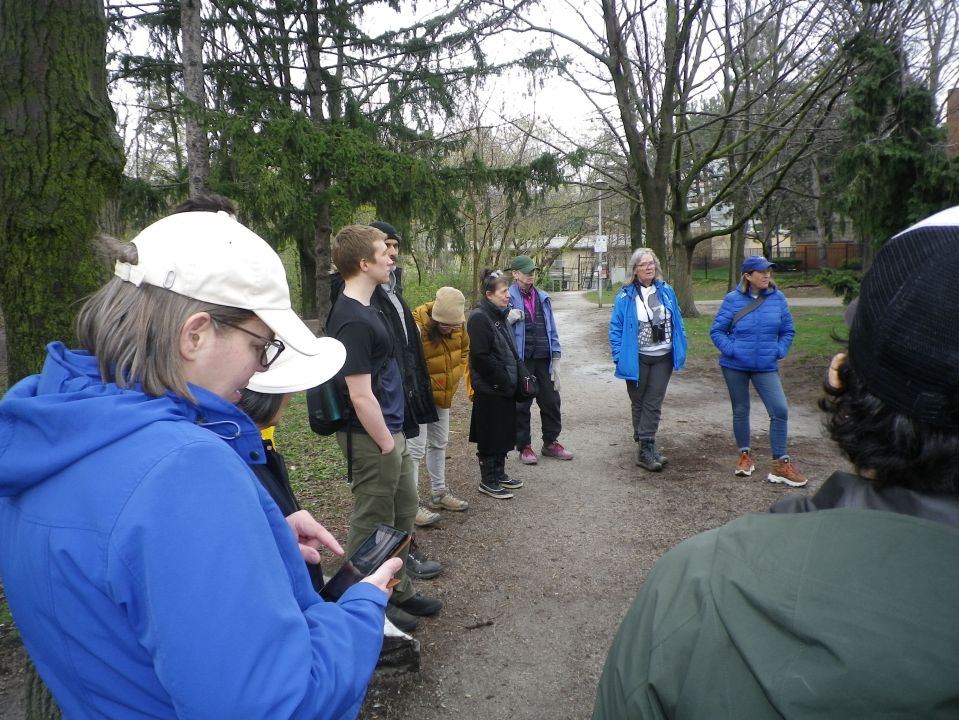
Bob first briefly mentioned that Castle Frank Brook used to run through the ravine until the 1950s and that it is one of the so-called “lost rivers” of Toronto. Later in the walk he said that, in its original state, the ravine would have been deeper, with steeper sides, not the flat bottom it currently has.
To illustrate the wide variety of trees in the park, Bob pointed out several just in the area close to the subway exit: honey locust, Siberian elm, Norway spruce, tulip, a member of the cypress family from the West coast and Norway maple (a non-native invasive and unfortunately the commonest tree in the park). Here is the group again:
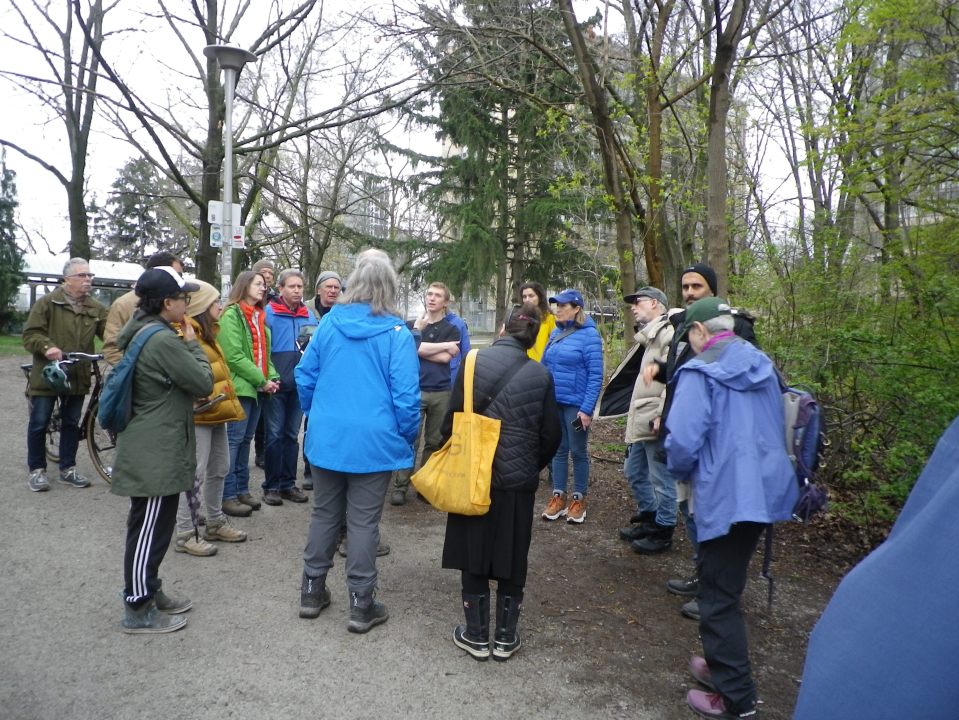
At this point, a woman in the group said she could see a yellow-rumped warbler in a tree right above us. This is a stock photo:

Another tree visible just down from the park entrance is Manitoba maple. It is debatable whether this tree is non-native. It is native to both northwestern and southwestern Ontario. Bob said the most important point is that it supports native insects, and thus birds.
Unfortunately, rain started not long after the start and continued off and on throughout the walk. Everyone looks rather gloomy:

Of course we found garlic mustard. It is present throughout the park and easily identifiable at present by its white flower. Bob is showing a sample to one of the group. He said that it is one of the main non-native invasive plants that we will be pulling up as part of our Toronto Nature Stewards activity:
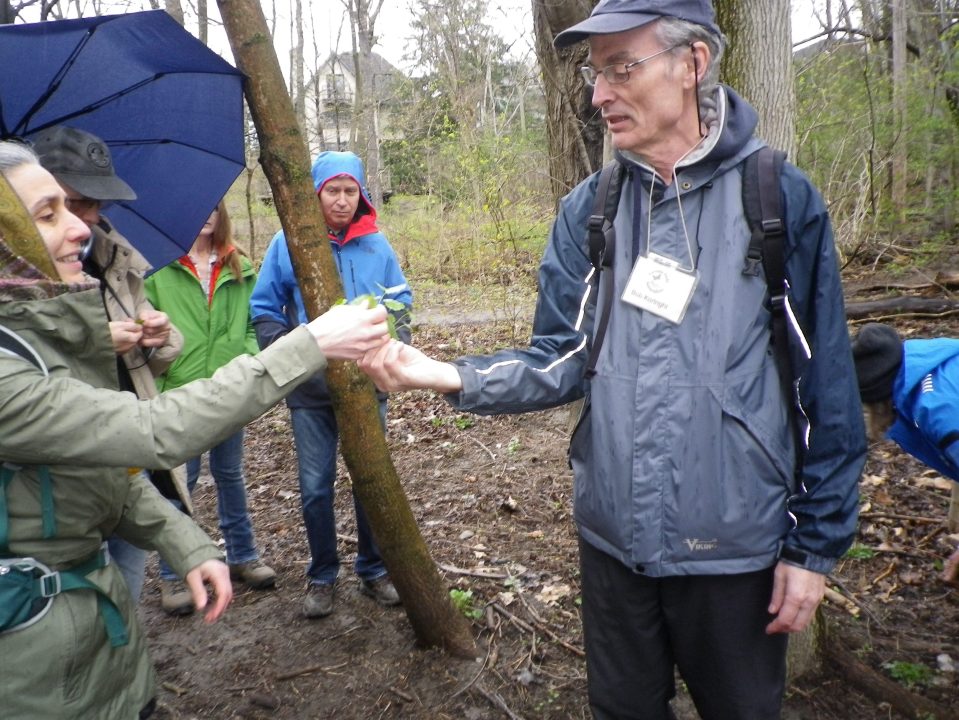
Bob also pointed out many examples of European buckthorn, a non-native invasive tree that we have spent many hours removing, using an extractigator on the larger ones. Here Bob is pointing at winter creeper eunonymous:
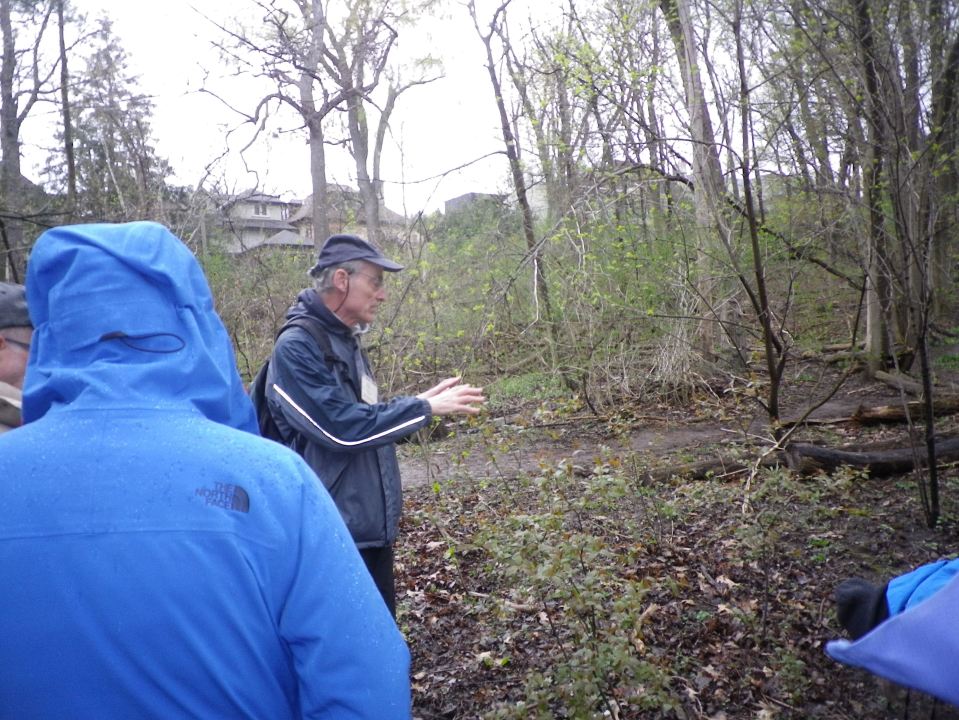
Burning bush, privet and honeysuckle are also non-native invasive bushes.
These are holes in a tree that have been pecked out by a woodpecker. There are several types of woodpecker in the park. In the background you can see the end of Glenayr Rd:
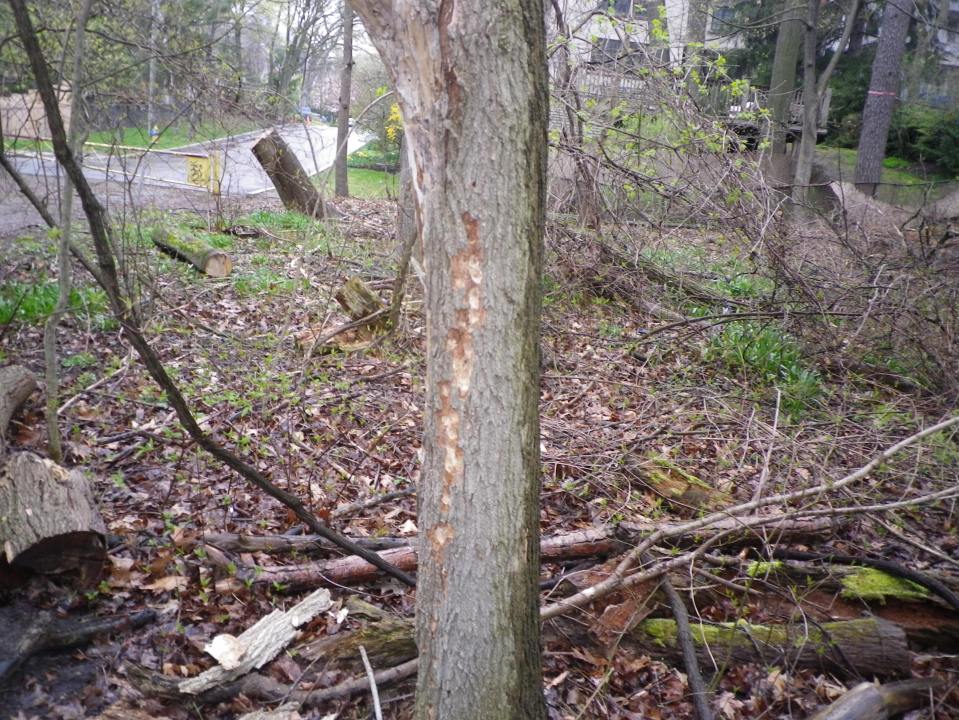
The rain got heavier as we advanced towards the Bathurst St bridge. We stuck it out:
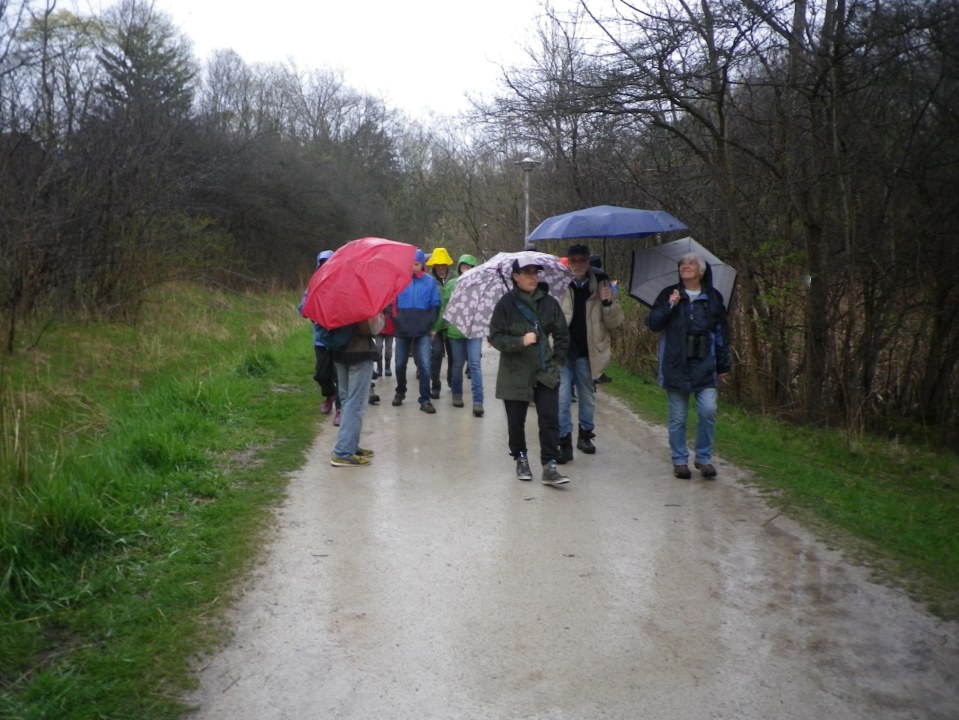
Bob pointed out one out of many examples of hawthorn, which has both native and non-native species; he said Ontario is the hawthorn capital of the world. Botanists disagree on how many types there are; the range of their estimates is 20 to 100.
This is field horsetail (photo by Marilyn MacKellar). It has two different types of shoot (you can see them in the photo); one is fertile and the other sterile; they have different purposes.
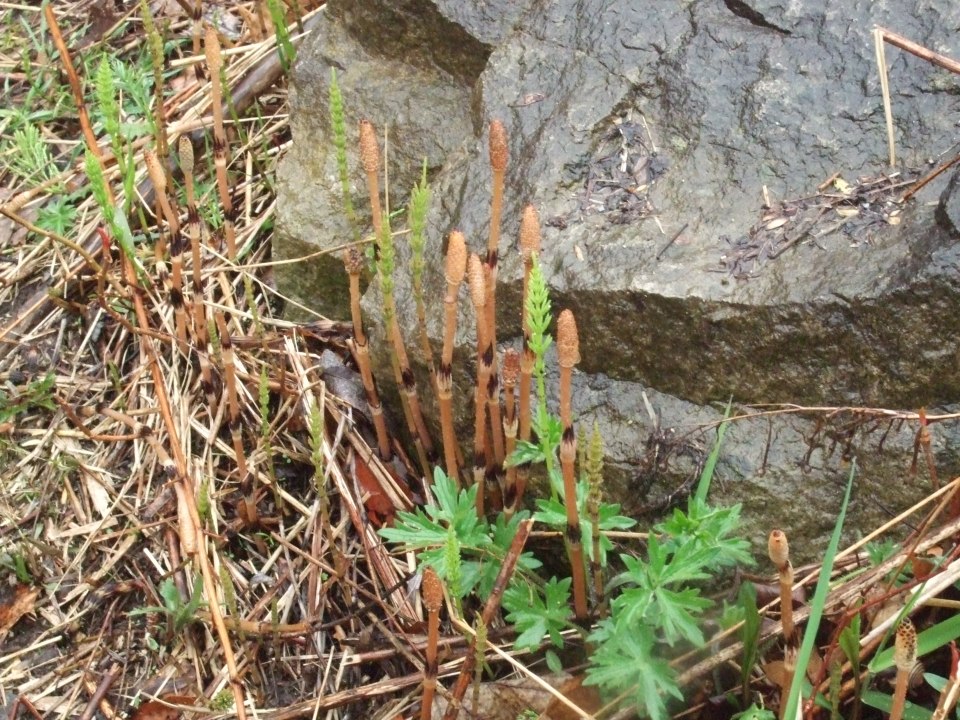
Bob said there are 6 types of horsetail in the GTA.
This is the flower of a maple tree, seen under the Bathurst St bridge:
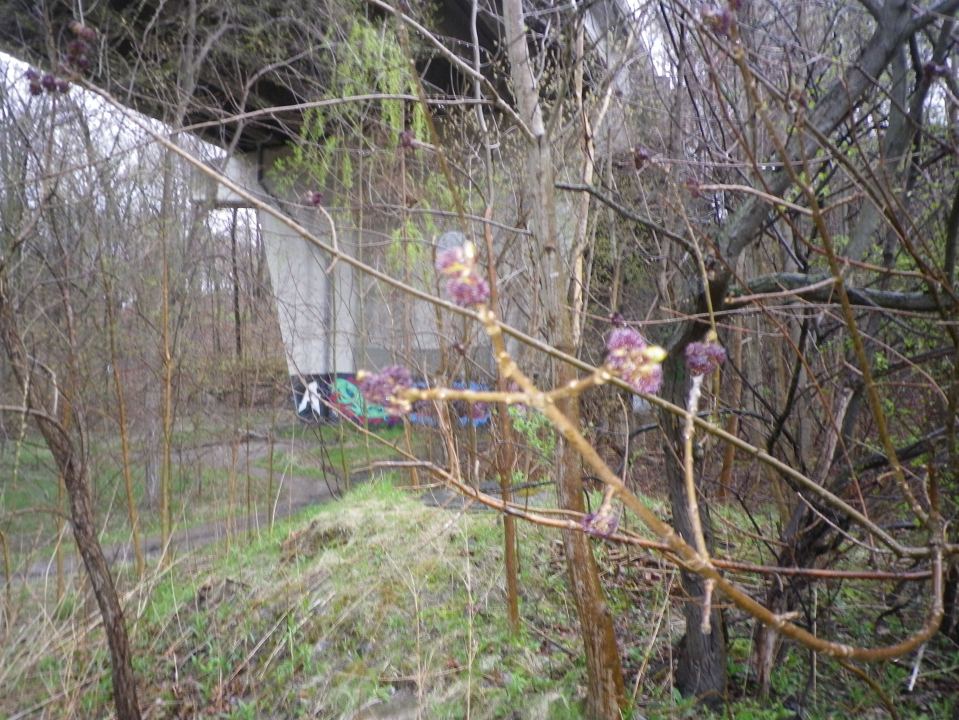
Here is Bob, holding forth to a somewhat smaller group on the path between the Glen Cedar footbridge and the dog park:
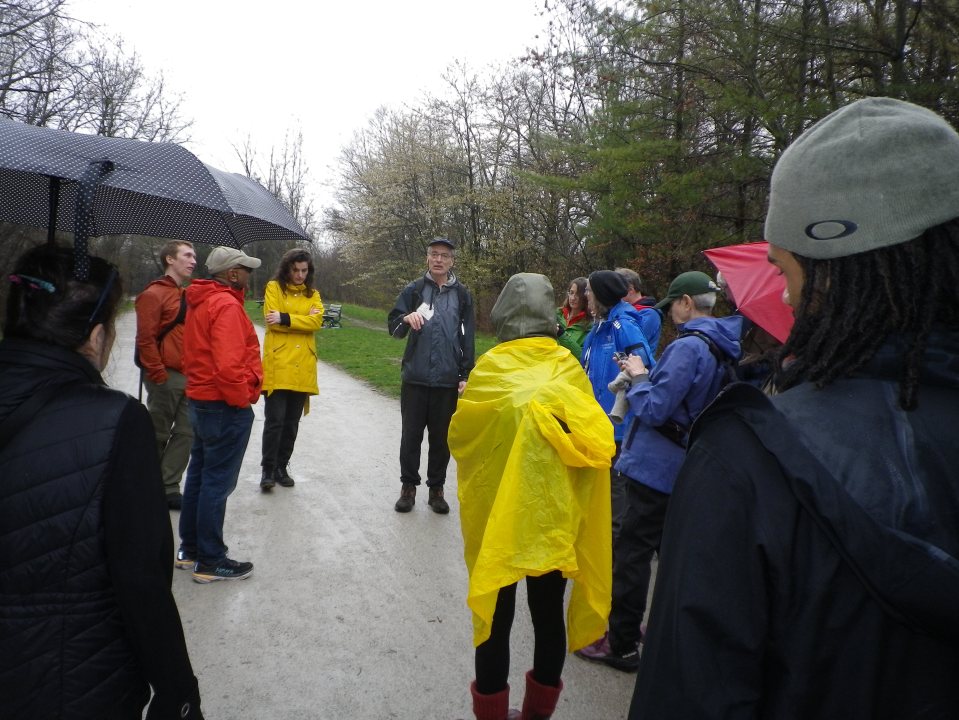
I think the tree to the left of the bright green bush is a dead ash tree. We saw quite a number of these along the path. They have all been killed by the emerald ash borer:
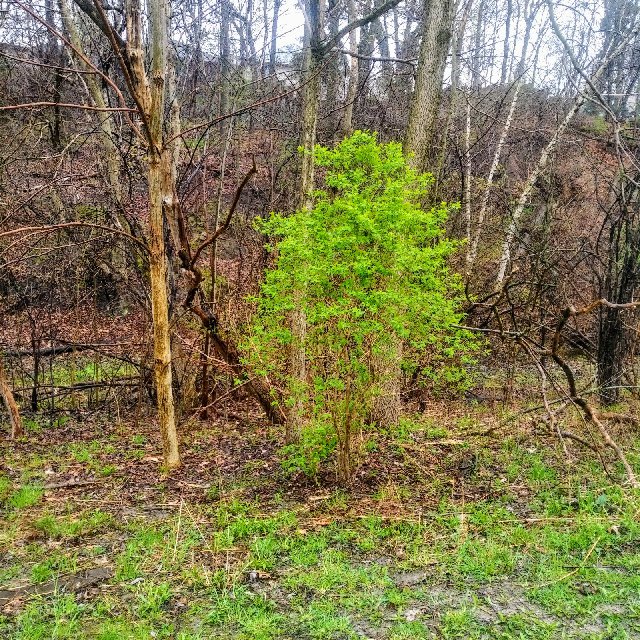
Bob said that the flowering bushes on the north side of the path between the Glen Cedar footbridge and the dog park, one of which I had noted in my previous blog post, are of the cherry family.
Also in this section of the park, we saw white pine. Bob said this is the Ontario provincial tree. Across Canada, the jack pine is probably a more common tree. The most common tree in Canada is likely either the white or black spruce, since they are the main trees in the boreal forest.
On the other side of the path here he showed us a mature black walnut. This is a stock photo:
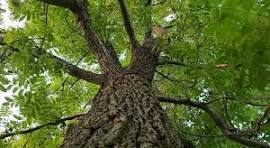
The group finished up close to the north end of the park at Ava Rd. I had to leave before that as I had a ticket for a Hot Docs film. Thanks once again to Bob for sharing his incredibly wide knowledge of the plants, bushes and trees in the park.
Friday Litter Pickup Group has a visitor
Our Friday litter pickup group had a visitor on 3rd May. Valentina brought along Nick from Montreal, who was here to run a half-marathon in the marathon on Sunday 5th. He is on the far right. We also had John Kneller, who had recently completed an adventurous solo canoe trip in Algonquin Park:
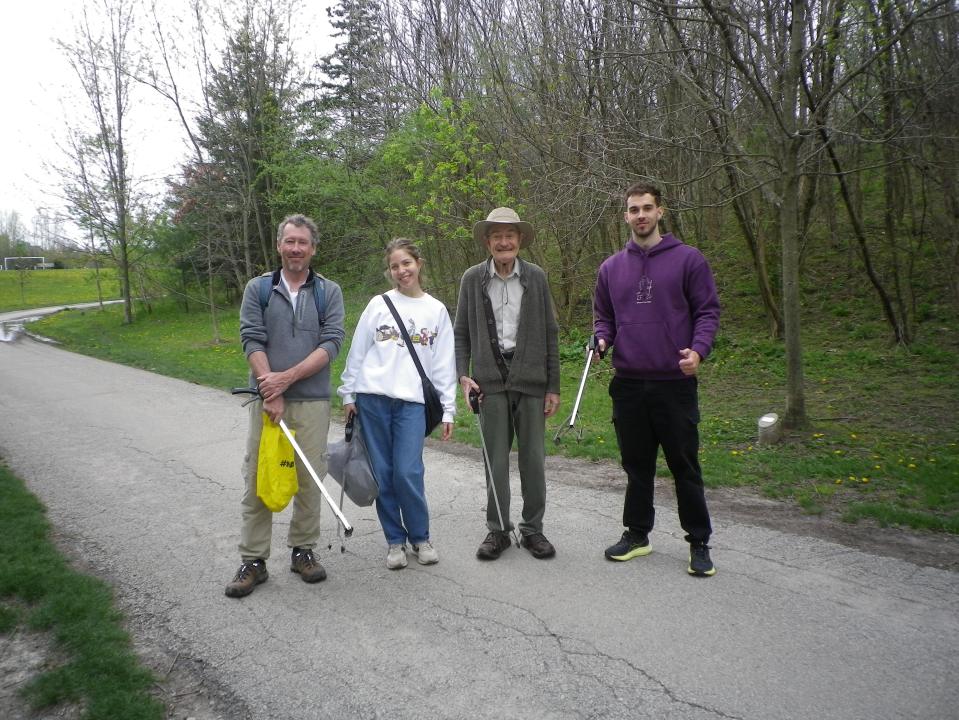
We were joined in the photo-shoot by a dog belonging to the man who took the photo:
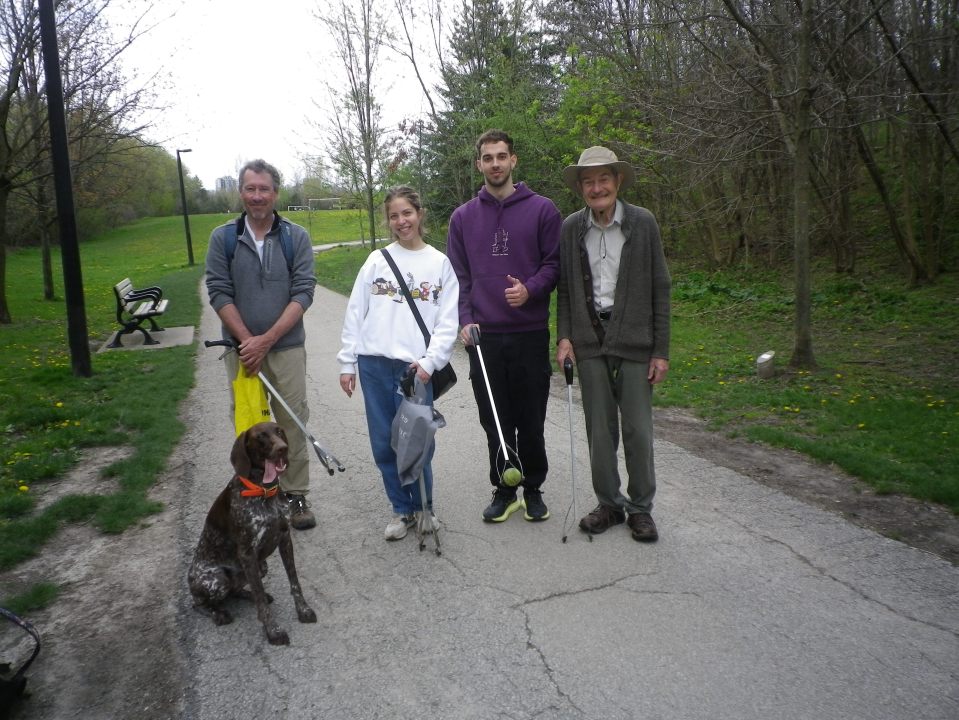
Toronto Nature Stewards (TNS) program gets under way
On Saturday 4th May, this year’s TNS program started with 5 of us: Janna, Dana, Donna Bob and me in Management Unit 1. We pulled up a lot of garlic mustard and left it on the ground to rot. Bob also pulled up quite a few young Norway maples and European buckthorn saplings. We will normally be going out on Saturday afternoons at 2 pm, but may switch to Sunday afternoon if the weather looks better then. The other team led by Alexandria Pike and Kathryn Bryce will be going out at 6.30 pm on Tuesday evenings, meeting at Heath St W. If you want to join us, you need to register on the TNS web site.
John Cummings